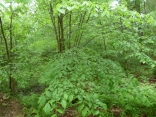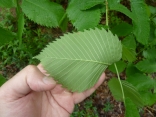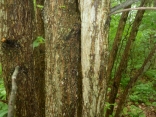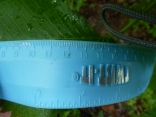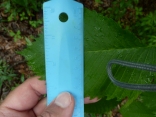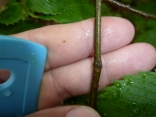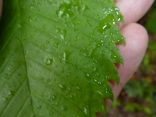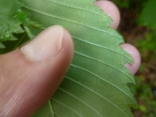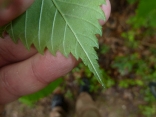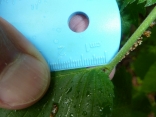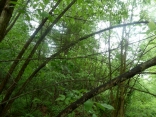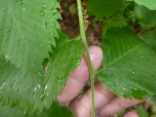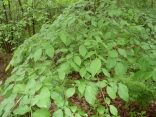One of the most certain ways to tell the difference between American Elm and Slipper Elm (Ulmus rubra) is the lateral veins on the American Elm leaf blade do not fork (branch) until near the edge (margin) of the leaf. (In rare cases, one lateral vein may have a fork well before the edge on an American Elm leaf.) On a Slipper Elm leaf, the there will be at least two and sometimes many forks well before the edge of the leaf. In addition, Slipper Elm leaves tend to be rough on the top of the leaf and much more densely hairy on the back of the leaf. Buds and twigs on the American Elm tend to be brownish while twigs on the Slippery Elm are grayish and the buds are rusty brown to black. Finally, cutting a cross section of bark from American Elm will show an alternating pale and dark bands which are not seen in Slippery Elm bark.

